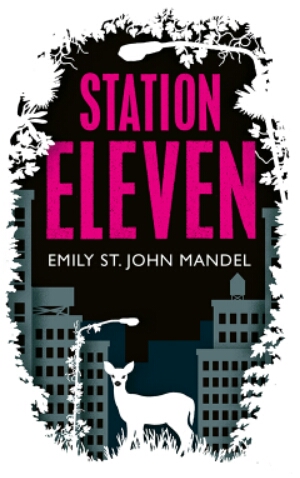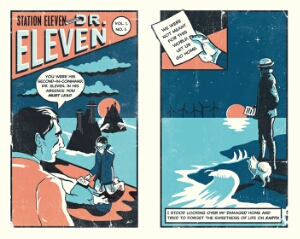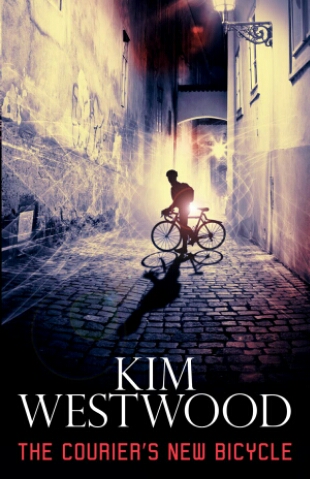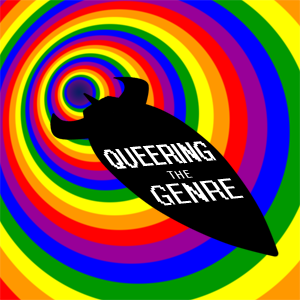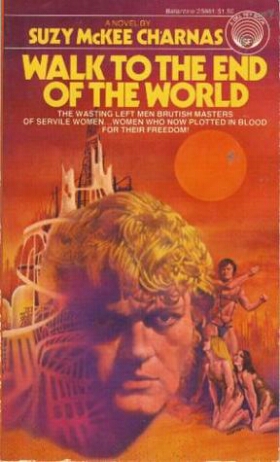Home » Posts tagged 'postapocalyptic'
Tag Archives: postapocalyptic
Habibi by Craig Thompson
One a month, those sponsoring my Patreon at $5/post or more get to nominate, and then collectively choose, a work for me to review that month. Last month, they chose…
Habibi by Craig Thompson

Sprawling across an epic landscape of deserts, harems, and modern industrial clutter, Habibi tells the tale of Dodola and Zam, refugee child slaves bound to each other by chance, by circumstance, and by the love that grows between them. We follow them as their lives unfold together and apart; as they struggle to make a place for themselves in a world (not unlike our own) fueled by fear, lust, and greed; and as they discover the extraordinary depth—and frailty—of their connection.
At once contemporary and timeless, Habibi gives us a love story of astounding resonance: a parable about our relationship to the natural world, the cultural divide between the first and third worlds, the common heritage of Christianity and Islam, and, most potently, the magic of storytelling.
~~~~~
It’s well known that alongside science fiction and fantasy novels, I have a serious passion for graphic novels and comics; not just the superheroes that are the most recognised and public face of the genre, but a whole variety of the form of marriage of word and art. I suspect it is with this, as much as the content, in mind that my Patreon patrons asked me to review Craig Thompson’s giant magical-realist science fiction comic Habibi!
Before we go any further, for reasons that will become clear, I think it’s worth reminding you that I’m a white British Christian raised in a white, secular household with Jewish family and influences, so what I say should be read bearing that in mind.
The art, it is undeniable, is beautiful. Thompson has integrated Arabic calligraphy into Habibi stunningly, using it to transition, as panel borders, and as part of the story; the pseudo-abstract patterns he creates using the sentences, poems and words in Arabic throughout the book are stunning, and provide a beautiful backdrop for detailed, rich art throughout, that is more than a little reminiscent of Hergé’s Tintin work. Unfortunately, that extends to the approach to drawing ethnicity; Thompson has a tendency towards racial caricature, notably with his black and Arab characters, who really do embody the worst visual stereotypes he could possibly have come across.
That extends into the writing of Habibi. This is a story centred around a Muslim woman who is sold into marriage as a girl, enslaved, flees and becomes a sex worker (clearly marked in the story as shameful by Thompson), and then a courtesan of the Sultan; and her companion, a black fellow slave who she cares for as a son, who becomes a water trader, and then a eunuch, before being reunited with her. With the Middle Eastern setting of the story, then, we hit all kinds of negative and problematic tropes about Muslim and Arabic culture, actively reinforced by the author and narrative alike; Thompson isn’t interested in deconstructing these tropes, only reinforcing them. This isn’t a clever deconstruction of the idea of the sex worker as inevitably-raped, objectified, and somehow damaged, nor of the eunuch or other nonbinary presentation as damaged and distorted by childhood events; instead, it straightforwardly replicated both of these, in painful ways to read. Habibi also of course suggests that all (Arab) men fetishise and sexualise peripubescent girls and want to sleep with them; this is of course tabloid-fodder in the UK, and no more true of any ethnic or religious group than it is of any other.
The real disappointment is that wrapped in this shell is some fantastic writing. Habibi borrows the tale-within-a-tale approach of texts such as the 1,001 Nights; Dodola tells stories to Zam and to herself as a kind of survival mechanism and teaching tool. These include stories from the Quran, myths about Solomon, cautionary tales, and more; they play with the differences between the different Abrahamic texts and traditions; and they do some fascinating things with religious syncreticism. The setting is also, were it less steeped in racism, worthy of thought; in a post-abundance world, there’s a blend of magical realist and post-apocalyptic elements, which creates a strange kind of familiarity and distance with the work that has some interesting ideas wrapped into it.
In the end, Habibi is almost like two things put together; some beautiful art and narrative approaches with some fantastic worldbuilding, married to an awful lot of really racist, sexist, transphobic ideas.
If you found this review useful, would like early access to my reviews, or would like to be part of choosing what I read each month, please support my ability to write these reviews by contributing to my Patreon.
Station Eleven by Emily St John Mandel
DAY ONE
The Georgia Flu explodes over the surface of the earth like a neutron bomb. News reports put the mortality rate at over 99%.
WEEK TWO
Civilization has crumbled.
YEAR TWENTY
A band of actors and musicians called the Travelling Symphony move through their territories performing concerts and Shakespeare to the settlements that have grown up there. Twenty years after the pandemic, life feels relatively safe. But now a new danger looms, and he threatens the hopeful world every survivor has tried to rebuild.
STATION ELEVEN
Moving backwards and forwards in time, from the glittering years just before the collapse to the strange and altered world that exists twenty years after, Station Eleven charts the unexpected twists of fate that connect six people: famous actor Arthur Leander; Jeevan — warned about the flu just in time; Arthur’s first wife Miranda; Arthur’s oldest friend Clark; Kirsten, a young actress with the Travelling Symphony; and the mysterious and self-proclaimed ‘prophet’. Thrilling, unique and deeply moving, this is a beautiful novel that asks questions about art and fame and about the relationships that sustain us through anything — even the end of the world.
~~~~~
Station Eleven is a postapocalyptic novel in the manner of The Road, and indeed shares some of the same features as that novel, such as travelling through the postapocalyptic world… but Mandel’s creation is actually completely at odds with McCarthy’s.
I wouldn’t say Station Eleven is hopeful; no book with a postapocalyptic prophet who kills his way to control of towns, kidnaps preteen/early-teenage girls to make them his and his cultists’ wives, and controls places by fear can really be described as hopeful, nor really can one which starts out by killing most of the population with a flu pandemic. At the same time, a novel that suggests not only will humanity survive, but that culture will survive, in the form of the Travelling Symphony – a 16th century style band of players, travelling a small part of what used to be America playing Classical music and performing Shakespeare – is inherently hopeful; it presents a picture of humanity as not only wanting but actually needing a certain level of culture to survive, a picture that is rather attractive.
The present tense narrative is also strangely hopeful; Mandel tells the story of an actor from a small town who hits it big, and Station Eleven watches as marriages form and break apart, as fame’s vagaries leave their mark as the media harass and then forget him, and the effects on those around a celebrity. Indeed, this strand of Station Eleven is a fascinating, beautiful attack on the damage celebrity culture does to those we think of as inviting it; celebrities themselves, and those in their close orbits. We learn about two of the three wives of our actor, Arthur; about his close friend Clark; and about Arthur himself, all damaged in some way by Arthur’s fame.
Of course, neither of Mandel’s narratives would be at all compelling if Station Eleven wasn’t. The two timelines are interleaved brilliantly, moving around among characters in “past” and “present” – that is, the pre-and-para-apocalypse and the post-apocalypse – who are linked through Arthur’s final performance of King Lear; that simple, minor link serves as a brilliant way to tie the various individuals, otherwise very disparate, together, especially as while some coincidental postapocalyptic meetings happen, Mandel doesn’t push it and bring everyone together. That lack of contrived collision is a real strength of Station Eleven, avoiding a forced, false reunion; it gives the book a much more natural, honest and real feeling that might otherwise have been lost.
The characters of Station Eleven are beautifully human; each is an individual with very individual interests, from Arthur’s inability to deal with his fame and lack of real human connection caused by his fame – the tragic trajectory of Arthur’s life is a really interesting demonstration that it doesn’t take an apocalypse for people to die unhappy. By contrast, Clark’s trajectory demonstrates that an apocalypse isn’t necessarily a tragic event; its immediate impact is inevitably traumatic, especially in parting him from his boyfriend, but the way he develops is an interesting study of a character responding to disaster.
Station Eleven, though, is dominated and defined by female characters; Kirsten and Miranda are really the core of Mandel’s novel, with their distinctly different models of female life, possibility, and development. Mandel doesn’t go down the well-trodden routes of a woman destroyed by her divorce – nor one who is completely motivated by it; rather, Miranda is a brilliant character in her own life, who interacts with but is far from defined by the men around her. It’s a great portrayal of an older woman, as well, as we see her grow, mature, and develop wonderfully. Kirsten, on the other hand, is a young woman, a child at the time of the apocalypse, who grows up in a strange limbo state, one that Mandel paints beautifully – that of half-remembering the abundant pre-apocalypse, but unsure how much is actual memory and how much is constructed. Station Eleven handles it really deftly, intelligently and well, and Kirsten is a really fascinating character as a result.
Station Eleven isn’t perfect – it could do with a little more exploration of how a stable society actually develops. Worse, Mandel skims an awful lot over the pain and horror that is implied in the immediate aftermath of the apocalypse – especially concern surrounding loved ones; indeed, Mandel really takes away the pain of those who lose loved ones, and it seems very strange to have that emotion lost given the emotional truth of so much of the rest of the novel.
Overall, though, Station Eleven is a great example of post-apocalyptic literature with heart; Mandel takes a theoretically crushing narrative and injects it with hope, without taking away (although, granted, blunting) the horror of apocalypse. Very well done.
The Courier’s New Bicycle by Kim Westwood
Salisbury Forth is a courier of contraband in the alleyways of inner Melbourne, a city of fuel rationing, rolling power outages and curfews.
It’s a stressful life, post-pandemic. A vaccine dispensed Australia-wide is causing mass-infertility, and the government has banned all remedies except prayer.
Vigilantes prowl for transgressors while the pious gather like moths under the streetlights at dusk. Then someone starts trading tainted hormones on the boss’s patch. Salisbury must find whoever is trying to destroy the business before everything goes belly up…
~~~~~
For a novel that made the Tiptree Honour List and won an Aurealis and a Ditmar Award, and that is cited in every discussion of queer science fiction, The Courier’s New Bicycle is hard to find in print; in the end, I resorted to asking Alisa Krasnostein to lay hands on a copy and bring it with her to LonCon 3 – which I am grateful to her for doing!
The Courier’s New Bicycle is not only cited in every discussion of queer speculative fiction out there, it deserves to be, and in any discussion of near-future or postapocalyptic science fiction too; the world posited by Westwood is terrifying, but also terrifyingly plausible. In the wake of environmental catastrophe and pandemic, fertility has dropped, green vehicles are not just the norm but the law, and a Christian fundamentalist government with very strict ideas of morality (cisgendered male and female are the only acceptable genders, hetero the only acceptable sexuality) rules Australia. Westwood paints this, and its consequences, vividly and in strong forceful strokes; the images of scooters and beetle-wing-quiet cars crawling the streets of Melbourne, bicycles whipping past them and ruling the road; fanatics gathered in prayer-shawls beating up “deviants” – these are described with an amazing vividness and immediacy.
The role of the fanatics is in part driven by the degree to which this is a book peopled by “deviants”. Salisbury Forth, Sal, is intersexed; various of Sal’s friends are homo- or bisexual, a number are trans, and her closest friend is also her boss, a producer and provider of fertility hormones. Every character has their own interests, voices, motivations, and characterisations; that The Courier’s New Bicycle manages to be sympathetic to some of the grimmer villains of the piece while still being absolutely clear that they are villains is impressive, and fantastically well done. Westwood’s ability to give each character interiority despite the book being wholly from Sal’s perspective is really a beautiful thing to see.
The Courier’s New Bicycle is a queer book through and through, treating queerness as the norm and repression/suppression of that as a deviation form it; but this is done subtly and neatly, worked in throughout the book as the various characters interact. It’s certainly subtler than the animal rights message Westwood wants to put across, which is very direct indeed, but also effective; it’s not a character giving a Goodland/Rand style diatribe, but descriptions of abuses of animals for economic purposes that drive this element.
Finally, the plot; The Courier’s New Bicycle could be accused of falling into tropes here, with elements of cyberpunk and the mafia novel both involved, but the way Westwood brings it off the page and into a kinetic, powerful life of its own puts it a cut above most novels of either type. The various threads which tie in, the refusal of Westwood to ignore the role of the personal in economic and political relationships and dealings, the fast pace and brilliantly done laying of clues, all combine to be a stunningly good plot; it doesn’t tread new ground per se, but once the layers of the queerness and the setting are noted, it stands above most books around it.
Westwood’s second novel is hard to find. But, with awards aplenty, accolades abounding, and absolutely wonderful writing, The Courier’s New Bicycle really rewards the hunt!
Walk to the End of the World by Suzy McKee Charnas
Allera was a Fem, and she knew the horrors of the Holdfast, where labor fems and breeding fems were treated worse than beasts.
She knew the legends of the free fems who roamed the scorched plains beyond the Wild.
And she knew what she had to do.
Walk to the End of the World is the first of the prophetic science-fantasies about Alldera, the fems and the world after the Wasting.
~~~~~
I fear the blurb for this edition of Walk to the End of the World is more influenced by subsequent books in the series than the content of this novel itself; an accurate plot summary would focus on Bek, as it is his quest and his character development on which the novel rests.
That’s not to say that the dystopian Holdfast is not portrayed in the book, or is portrayed as anything other than dystopic; but we only really find out how dystopic it is for the fems halfway through, as the first half follows Bek and his companions first to and then from Boya, where the fems are held, on a quest to find Bek’s father. Walk to the End of the World integrates an awful lot of information into this narrative, sometimes poorly in infodumps but on the whole well, as we’re shown the horrors of the life of the fems, or told about the life of the men through emotional narration rather than dispassionate exposition. Charnas’ world is a dark postapocalyptic one, rather darker than has become the modern trend, with gender-based repression, age-based caste structures, and racist indoctrination against now-dead non-white races the norm; that this is still a believable future is in itself horrifying.
The characters are products of their environment, and fascinating. From Kelmz, who embraces the lore of his society almost without question but comes to have his understanding challenged, to D Loya, who actively stands outside the normal social structures of Holdfast and defies their laws while embracing their doctrine; from Bek, ostracised and expelled, his mind probing the edges of doctrine, to Alldera, refusing both the overt culture of the men and the covert culture of the fems, Charnas has peopled Walk to the End of the World with characters whom, against our wills and our better judgements, we sympathise with, as she reveals more of them and develops their interiority as the novel progresses. It’s a fascinating piece of work, especially as the novel is split into sections each focusing on a different character, but shifting focus even within those sections; the jigsaw puzzle the reader builds up in their mind of these characters slowly comes together as the novel comes to its close.
The plot is also non-standard enough to both look like and distinguish itself from the standard fantasy quest narrative. Walk to the End of the World is focused, nominally at least, on Bek’s quest to find his father, whose name he knows despite the normal societal strictures against such knowledge; along the way they gain and lose companions, find old rivals and enemies, overcome obstacles and more, but Charnas makes this more than just a normal walking story. The emotions, rather than actions, of her characters are her focus; the approach to their thought processes is fantastic, and the way they’re all clearly revealed as people, and their different views of the world, form the real centre of the book.
Walk to the End of the World was strongly recommended for the Queering the Genre project by Elizabeth Bear, and she was definitely right; originally published in 1974, Charnas’ world is one with strict gender-sex equation, it’s true, but also with a universal (if situational?) homosexuality. Indeed, heterosexual relationships are seen as perversions of the proper norms of society; the men treat homosexuality as simply the standard, natural order of things, while the fems seem to have a similar attitude. Indeed, it feels rather ancient Greek in that regard; with disdain for heterosexual relationships due to the corrupting influence of the opposite sex.
All in all, Walk to the End of the World packs an awful lot of punch into its scant 250-odd pages; Charnas combines worldbuilding and character-writing to such fantastic effect that we’re really drawn into her dystopian vision of the future… why this isn’t a Gollancz Masterwork I’m never likely to understand!
The Scarlet Plague by Jack London
Outside the ruins of San Francisco, a former UC Berkeley professor recounts the chilling sequence of events – a gruesome pandemic which killed nearly every living soul on the planet, in a matter of days – which led to his current lowly state. Modern civilisation has fallen, and a new race of barbarians, descended from the world’s brutalised workers, has assumed power. Over the space of a few decades, all learning has been lost.
The catastrophe happens in 2013; 2012 marks the cetennial of the novel’s first publication.
~~~~~
The Scarlet Plague is, in many ways, the precursor of post-apocalyptic novels like The Road, with a greater concern with the impact of apocalypse than its cause; and also of the modern terror of the pandemic, be it swine flu, bird flu, MRSA or any number of other diseases. I fear they could have wished for a better precursor.
The majority of the book is a first-person recounting by “Granser”, the former UC Berkeley professor, of the rapid, total collapse of civilisation as the scarlet plague struck and wiped out the population. Unfortunately, Granser’s narrative voice is indistinguishable except by its use of the first person from the narrative voice of the framing elements; London’s writing style, except in the clipped dialect of Granser’s audience of children, is plain and rather flat, even though Granser should be bringing an awful lot of emotion to this story.
Similarly, the only characterisation of Scarlet Plague is class-based; the savage working classes who are, essentially, brutes held in check only by civilisation versus the enlightened middle and upper classes, who band together and act in a totally civilised manner throughout. Every character in the book is white, and there are mentions but little more of female characters, who show no agency; even for a depiction of the class-ridden society that London is trying to show this seems… unrealistic.
In the end, Scarlet Plague may be one of the first apocalypse-by-plague novels, but it’s also one of the worst.


